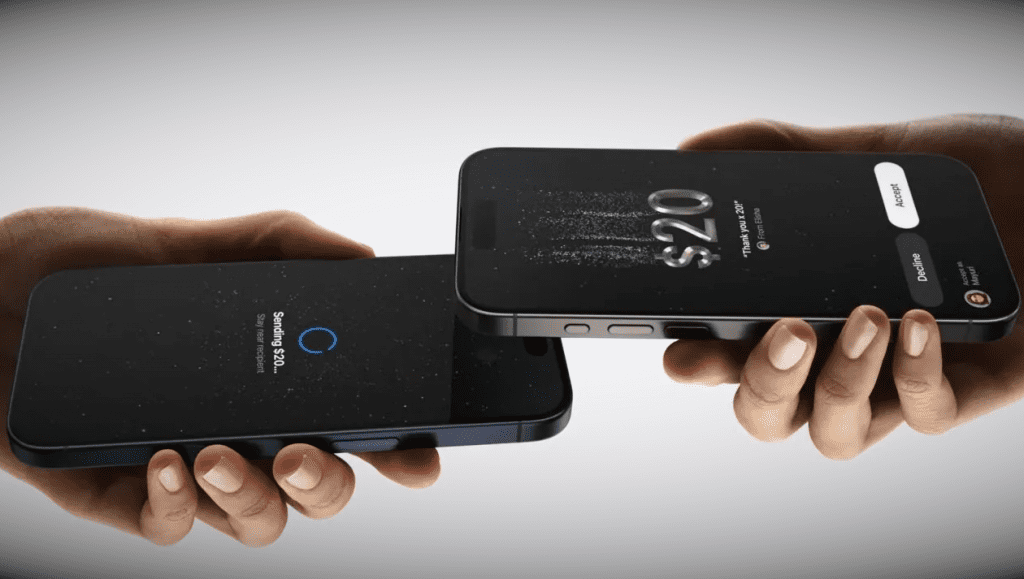Apple’s WWDC 2024 keynote unveiled Tap to Cash to simplify p2p payments, simply tap one iPhone to another to send money via Apple’s wallet.
Why should you care about a minor tech upgrade from Apple? Because this one could be the first step towards a wider change in how we handle personal transactions. Dive in to discover how Tap to Cash works, why mobile wallets are gaining dominance, and the potential risks of a Google & Apple controlling our financial freedom.
How Tap To Cash Works
This feature leverages the iPhone’s NFC functionality to transfer money instantly and privately between devices. By just tapping two iPhones together, users can send or receive funds without sharing personal details such as phone numbers or email addresses. It’s privacy focused, quick and eliminates the need for physical cash or cards.
With Tap to Cash, Apple continues its mission to replace the physical wallet with a digital one, enhancing convenience and security for iPhone users.

Mobile Wallet Dominance
The introduction of Tap to Cash is a testament to the growing reliance on mobile wallets. Both Apple and Google have been steadily integrating more features into their wallet apps, positioning them as essential tools for modern financial transactions.
These tech giants hold a significant market advantage by controlling the underlying operating systems and app stores, making it easier for them to integrate new features directly into their ecosystems and block or hinder competitors.
Apple Wallet and Google Wallet are not just about storing credit cards anymore; they are becoming comprehensive financial hubs. From storing event tickets and boarding passes to facilitating contactless payments and p2p transactions. Mobile wallets are reshaping how we interact with money and transact value. The convenience of having everything in one place is driving user adoption and gradually making traditional wallets obsolete.
There are only a handful of places that I still use cash for and only bring my card along to supermarkets and petrol stations where the bill is likely going to exceed the current £100 limit for contactless mobile payments.
The Risk of Centralisation
While the convenience of Apple and Google Wallets is undeniable, there is a looming concern over the centralisation of financial services. When a few companies control the majority of digital payment methods, it can lead to a duopoly that may stifle competition and innovation. This centralisation poses risks such as higher fees, limited consumer choice and potential privacy issues.
Web3 enthusiasts should see this as both a challenge and an opportunity. The rise of Tap to Cash and similar features highlights the need for alternative, decentralised payment solutions that can offer the same level of convenience without the pitfalls of centralisation. Blockchain technology and cryptocurrencies could play a crucial role in creating a more open and competitive financial ecosystem.
The introduction of Tap to Cash by Apple is a significant step forward in the digital payment landscape. It brings unparalleled convenience and privacy to iPhone users, further solidifying our mobile wallets place in our daily lives. Bitcoin failed as a p2p electronic cash and found product market fit as a store of value. Perhaps we will see something else emerge over the next few years which will offer a decentralised alternative to a financial future controlled by Google and Apple.
If you would like to stay up to date with blockchain development and emerging DeFi technology, I have a newsletter at https://bachini.substack.com. Join the conversation and be part of the movement towards a decentralised financial future.


